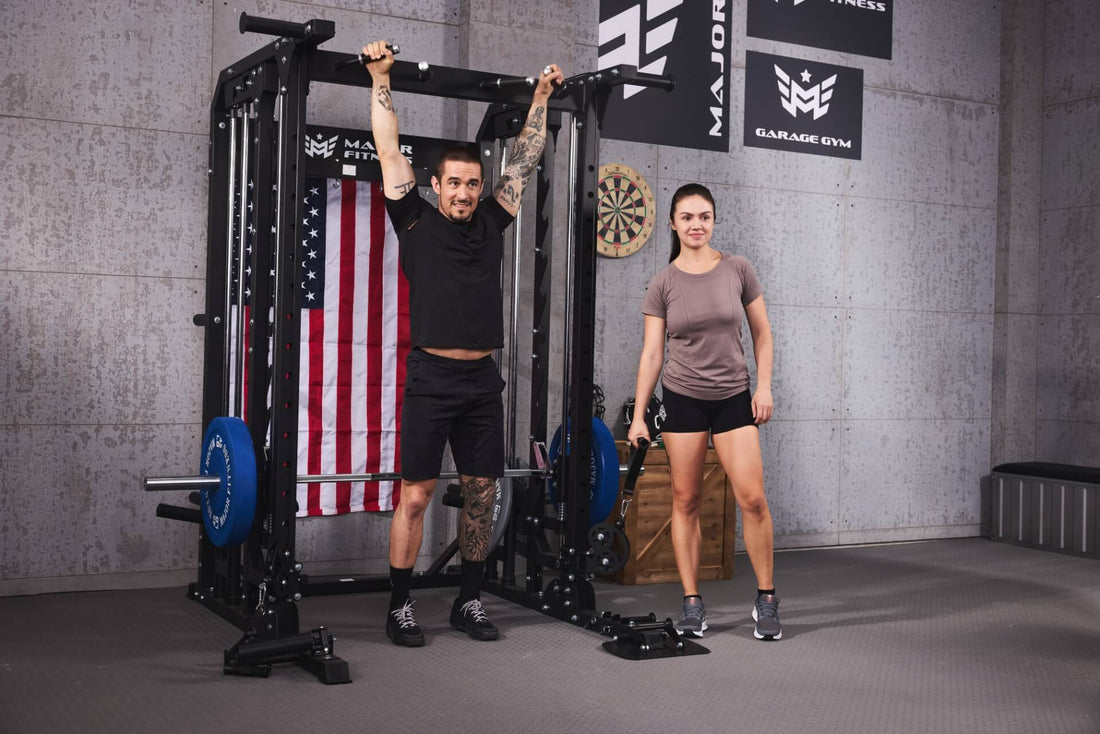
Have you ever switched your workout from free weights to a Smith machine, only to find the experience surprisingly challenging? Many gym-goers have encountered this unexpected difficulty and wondered, 'Why is the Smith machine harder?' This question stirs quite the debate among fitness enthusiasts and professionals alike. The aim of this article is not only to shed light on the reasons behind this phenomenon but also to provide insights into how you can capitalize on the peculiarities of the Smith machine to achieve your fitness goals.
The core difference between using Smith machines and free weights lies in their mechanics. Free weights require the user to control the weight through the full range of motion, engaging both primary and stabilizing muscles. The Smith machine, on the other hand, features a barbell that is fixed within steel rails, allowing for only vertical or near-vertical movement. This restriction can make exercises unexpectedly harder for several reasons. First, the guided path of the Smith machine doesn't allow for the natural arc that some exercises, such as bench press or squats, typically have when executed with free weights. As a result, muscles are engaged differently, which can lead to increased difficulty, especially for those not accustomed to the fixed path of movement.
Another aspect to consider is muscle activation. Research indicates that exercises performed on the Smith machine may result in decreased activation of stabilizing muscles compared to when performed with free weights. The body relies heavily on these muscles for balance and support during free-weight exercises, but the Smith machine's fixed pathway reduces the demand on them, placing more emphasis on the targeted muscle groups instead. This shift in muscle activation can make transitioning from free weights to the Smith machine challenging, as individuals might not have developed the specific strength or technique required for this mode of exercise.
Psychological factors also play a significant role in the perceived difficulty of the Smith machine. The anticipation of an exercise being more challenging can lead to mental barriers that affect performance. Additionally, the lack of requirement for balance and the feeling of safety because of the guided path can cause some to underestimate the effort required, leading to an unexpected challenge when they actually perform the exercise. Understanding these psychological components and adjusting expectations can help mitigate the perception of increased difficulty associated with the Smith machine.
However, it's not all about challenge and difficulty. The Smith machine offers several benefits, making it a valuable tool in any fitness regimen. For individuals recovering from injury, the controlled path of the Smith machine can provide a safer option for strength training without sacrificing the integrity of their rehabilitation. Moreover, the Smith machine allows for a focus on form and technique, particularly for beginners who are learning the correct execution of an exercise. This focus can aid in the development of a strong foundation for progression to free-weight exercises in the future.
Strategies to make the transition smoother from free weights to the Smith machine include starting with lighter weights to get acquainted with the machine's mechanics and gradually increasing the weight as comfort with the movement grows. Additionally, incorporating exercises that enhance proprioception and stabilization, such as balance ball exercises or single-leg practices, can improve overall performance on the Smith machine by strengthening the muscles that are less activated due to the machine's fixed path.

The debate around the Smith machine being harder is nuanced, reflecting the complexity of human physiology and psychology. Understanding the mechanics, muscle activation, and psychological aspects that contribute to this perception can provide gym-goers with a more refined approach to their workouts. The Smith machine, when used wisely, can be an effective tool in achieving fitness goals, offering a blend of safety and challenge. Embracing its unique characteristics can enhance your training repertoire, pushing you towards greater strength and resilience.
Ultimately, whether you find the Smith machine harder or not, the most crucial aspect is to listen to your body and respect its limits. Experimenting with different equipment and workout styles can reveal what best suits your individual needs and preferences. The journey towards fitness is deeply personal and endlessly variable. The Smith machine, with its distinct challenges and benefits, is just one of many paths you can take in your quest for physical well-being. Embrace the challenge, adapt your strategies, and you might find the Smith machine to be an unexpected ally in your fitness journey.



















